Blog
James Elbert Raney (August 20, 1927 – May 10, 1995) was an American jazz guitarist, born in Louisville, Kentucky, United States, known for his work from 1951 to 1952 and then from 1953 to 1954 with the Red Norvo trio (replacing Tal Farlow) and, during the same time period, with Stan Getz. In 1954 and 1955, he won the DownBeat Critics’ Poll for guitar. Raney worked in a variety of jazz mediums, including cool jazz, bebop, post bop, hard bop, and mainstream jazz.
In 1946, he worked for a time as guitarist with the Max Miller Quartet at Elmer’s in Chicago, his first paying gig. Raney also worked in the Artie Shaw Orchestra and collaborated with Woody Herman for nine months in 1948. He also collaborated and recorded with Buddy DeFranco, Al Haig and later on with Bob Brookmeyer. In 1967, alcoholism and other professional difficulties led him to leave New York City and return to his native Louisville. He resurfaced in the 1970s and also did work with his son Doug, who was also a guitarist.
Raney lived with Ménière’s disease for thirty years, a degenerative condition that led to near deafness in both ears, although this did not stop him from playing. He died of heart failure in Louisville on May 10, 1995. His obituary in The New York Times called him “one of the most gifted and influential postwar jazz guitarists in the world”.
more...It’s the Rho Ophiuchi cloud complex, which is the nearest star-forming region in space to us, being just 400 light-years away. Both professional and amateur stargazers like to look at Rho Ophiuchi, which can be found just to one side of the plane of the Milky Way. What Webb shows us is only a tiny part of this dense region of gas and dust, which is what you’d expect, given the telescope’s astonishing resolution. The entire image is about half a light-year across, or 4.7tn km. The eye is immediately drawn to the white nebula at centre-left where a relatively young – a few million years old – star called S1 is lighting up everything around it. But look below at the red, bar-like feature that stretches across the entire image. This is an outflow of material from a protostar called VLA1623. Very young stars – their age measured in mere thousands of years – will pull hydrogen gas and dust on to themselves as they grow. But the dynamics involved mean some of this material will also get ejected outwards to crash into, and light up, the nearby environment.
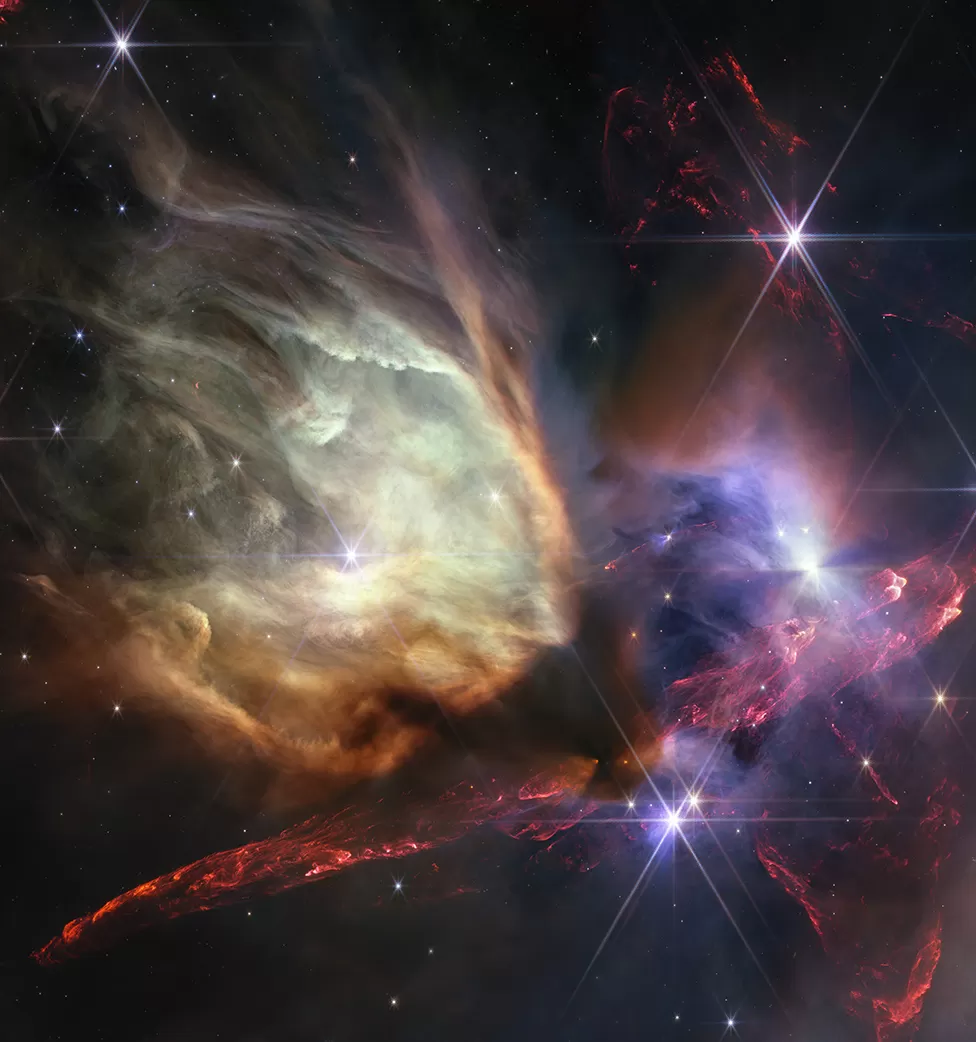
John Lester Nash Jr. (August 19, 1940 – October 6, 2020) was an American singer-songwriter, best known in the United States for his 1972 hit “I Can See Clearly Now“. Primarily a reggae and pop singer, he was one of the first non-Jamaican artists to record reggae music in Kingston.
Nash was born on August 19, 1940 in Houston, Texas, the son of Eliza (Armstrong) and John Lester Nash.He sang in the choir at Progressive New Hope Baptist Church in South Central Houston as a child. Beginning in 1953, Nash sang covers of R&B hits on Matinee, a local variety show on KPRC-TV; from 1956 he sang on Arthur Godfrey‘s radio and television programs for a seven-year period. Nash was married three times, and had two children.
more...Peter Edward “Ginger” Baker (19 August 1939 – 6 October 2019) was an English drummer. His work in the 1960s and 1970s earned him the reputation of “rock’s first superstar drummer”, for a style that melded jazz and African rhythms and pioneered both jazz fusion and world music.
Baker gained early fame as a member of Blues Incorporated and the Graham Bond Organisation, both times alongside bassist Jack Bruce, with whom Baker would often clash. In 1966, Baker and Bruce joined guitarist Eric Clapton to form Cream, which achieved worldwide success but lasted only until 1968, in part due to Baker’s and Bruce’s volatile relationship. After working with Clapton in the short-lived band Blind Faith and leading Ginger Baker’s Air Force, Baker spent several years in the 1970s living and recording in Africa, often with Fela Kuti, in pursuit of his long-time interest in African music. Among Baker’s other collaborations are his work with Gary Moore, Masters of Reality, Public Image Ltd, Hawkwind, Atomic Rooster, Bill Laswell, jazz bassist Charlie Haden, jazz guitarist Bill Frisell and Ginger Baker’s Energy.
Baker’s drumming is regarded for its style, showmanship, and use of two bass drums instead of the conventional single one, after the manner of the jazz drummer Louie Bellson. In his early days, he performed lengthy drum solos, most notably in the Cream song “Toad“, one of the earliest recorded examples in rock music. Baker was an inductee of the Rock and Roll Hall of Fame as a member of Cream in 1993, of the Modern Drummer Hall of Fame in 2008, and of the Classic Drummer Hall of Fame in 2016. Baker was noted for his eccentric, often self-destructive lifestyle, and he struggled with heroin addiction for many decades. He was married four times and fathered three children.
more...James George Hunter (August 19, 1918 – May 28, 1996), known professionally as Jimmy Rowles(sometimes spelled Jimmie Rowles), was an American jazz pianist, vocalist, and composer. As a bandleader and accompanist, he explored multiple styles including swing and cool jazz.
Rowles was born in Spokane, Washington, United States, and attended Gonzaga University in that city. After moving to Los Angeles, he joined Lester Young‘s group in 1942. He also worked with Benny Goodman, Woody Herman, Les Brown, Tommy Dorsey, and Tony Bennett, and as a studio musician.
more...Edward Durham (August 19, 1906 – March 6, 1987) was an American jazz guitarist, trombonist, composer, and arranger. He was one of the pioneers of the electric guitar in jazz. The orchestras of Bennie Moten, Jimmie Lunceford, Count Basie, and Glenn Miller took great benefit from his composing and arranging skill.
With Edgar Battle he composed “Topsy“, which was recorded by Count Basie and became a hit for Benny Goodman.
In 1938, Durham wrote “I Don’t Want to Set the World on Fire” with Bennie Benjamin, Sol Marcus, and Eddie Seiler. During the 1940s, Durham created Eddie Durham’s All-Star Girl Orchestra, an African-American all female swing band that toured the United States and Canada.
more...Performing with Jayson Rodovski, Jeff Bailey, Pete Whitman and Ernest Bisong for Cantor Inbal Sharret-Singer.
more...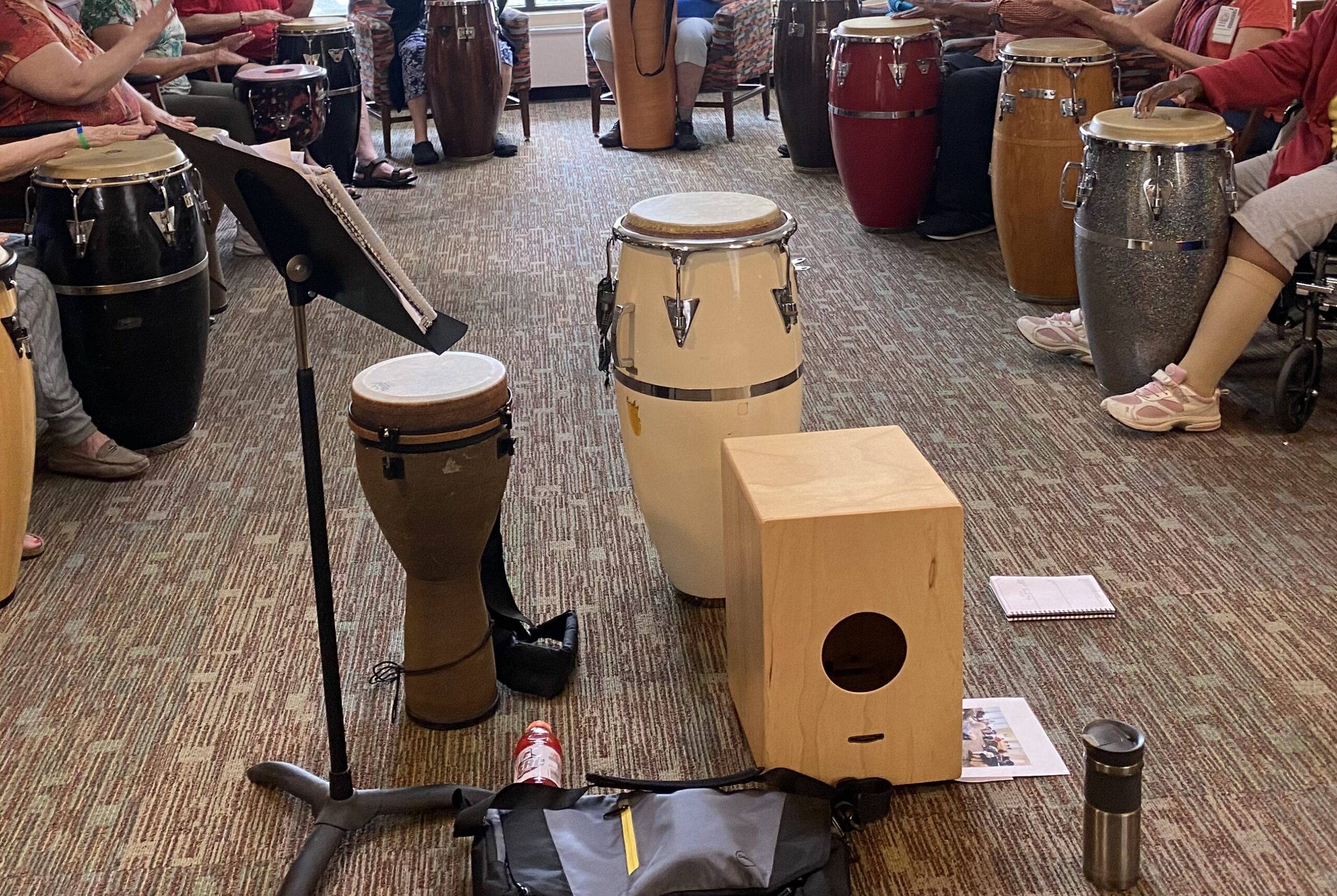
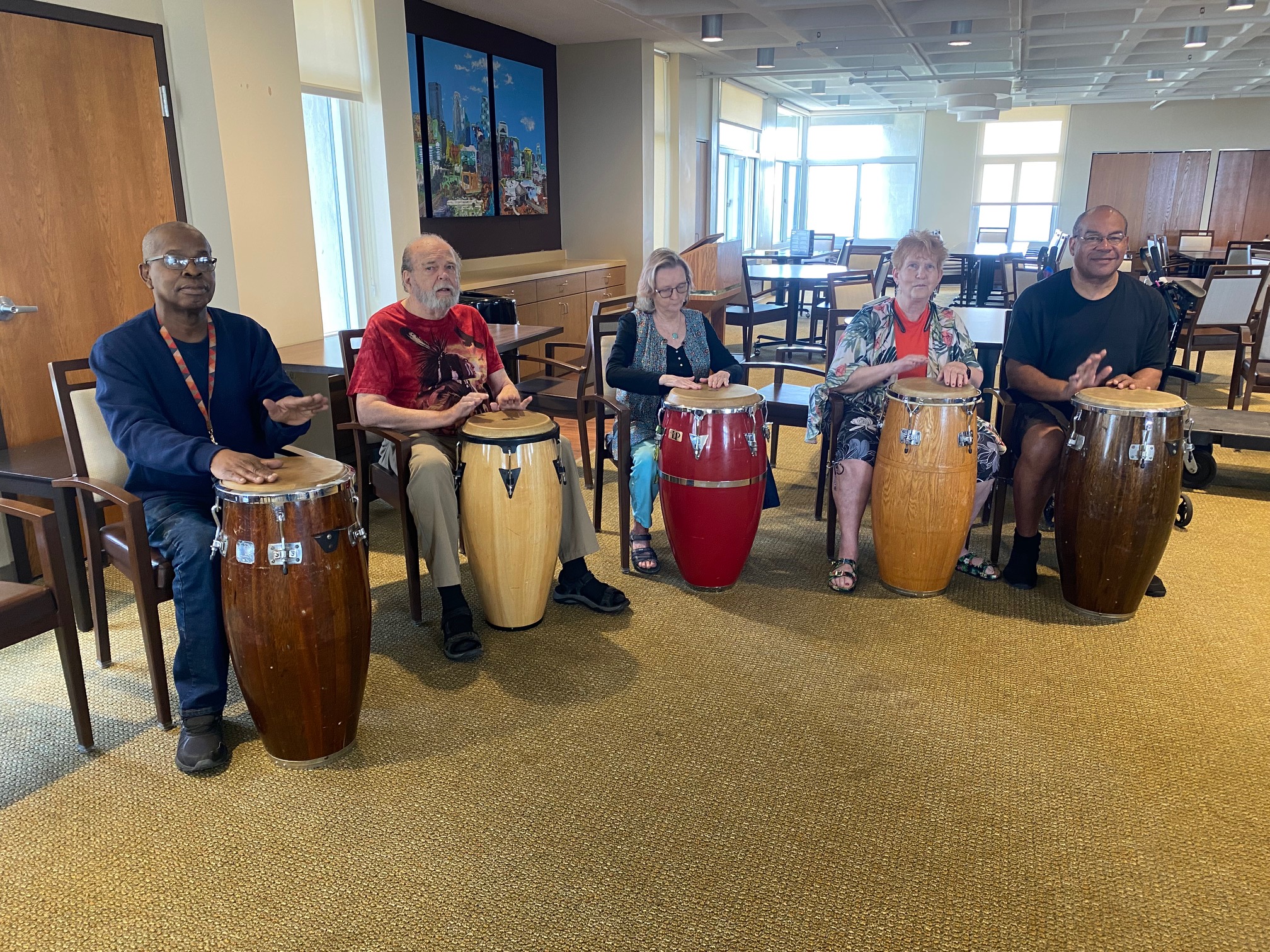
Messier 4 or M4 (also designated NGC 6121) is a globular cluster in the constellation of Scorpius. It was discovered by Philippe Loys de Chéseaux in 1745 and catalogued by Charles Messier in 1764. It was the first globular cluster in which individual stars were resolved.
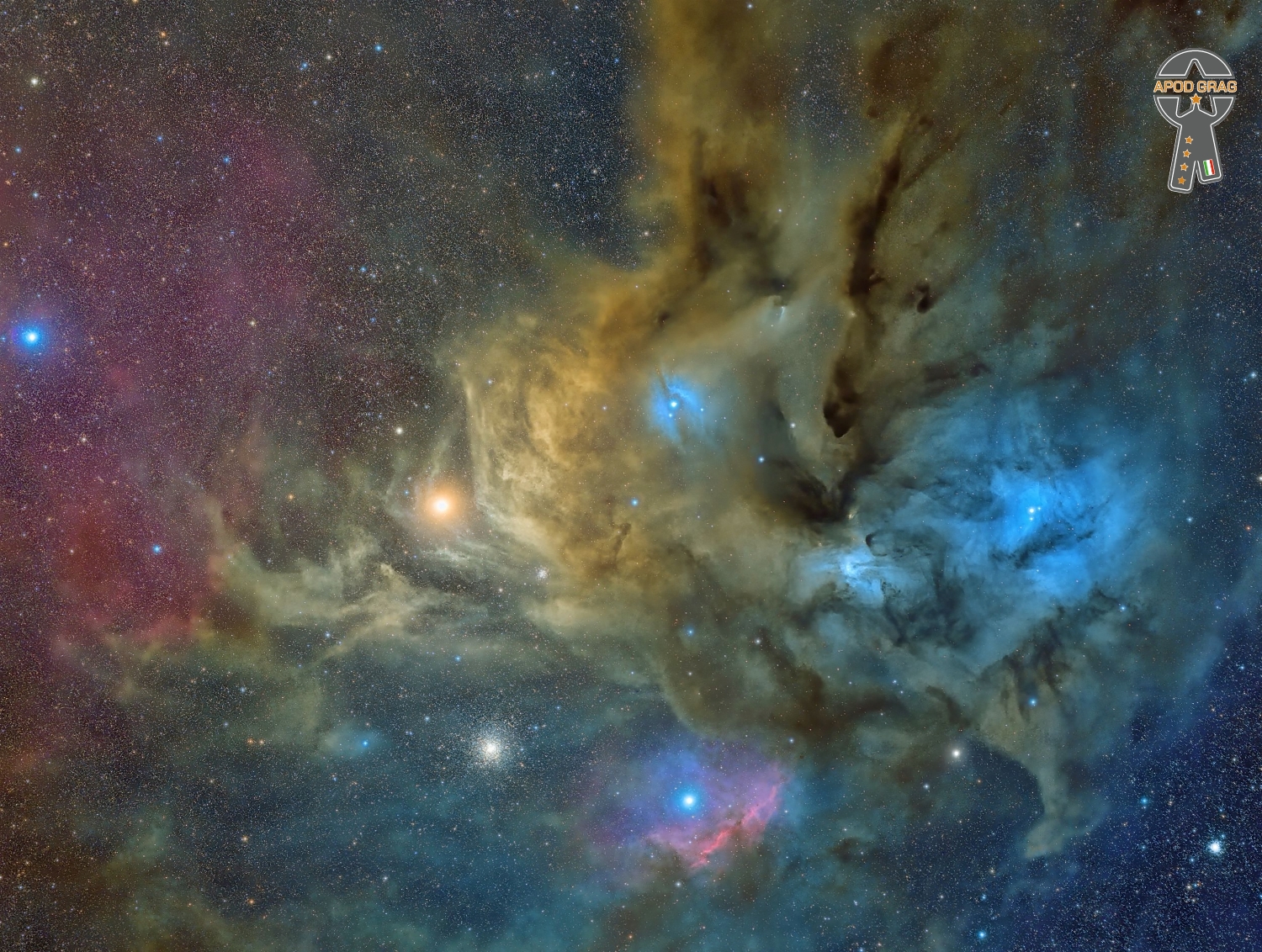
Donald Douglas Lamond Jr. (August 18, 1920 – December 23, 2003) was an American jazz drummer.
Born in Oklahoma City, Lamond attended the Peabody Conservatory in Baltimore in the early 1940s, and played with Sonny Dunham and Boyd Raeburn at the outset of his career. In 1944, he performed baritone saxophone and drums on Charlie Parker’s ‘’The Complete Savoy and Dial Studio Recordings 1944-1948’’and he took over Dave Tough‘s spot in Woody Herman‘s big band First Herd in 1945, where he remained until the group disbanded at the end of 1946. In 1947, he briefly freelanced with musicians including Charlie Parker, and then returned to duty under Herman in his Second Herd, where he remained until its 1949 dissolution. In the 1950s and 1960s Lamond found work as a session musician, recording in a wide variety of styles. He performed and recorded with Stan Getz, Zoot Sims, Johnny Smith, Benny Goodman, Ruby Braff, the Sauter-Finegan Orchestra, Sonny Stitt, Johnny Guarnieri, Jack Teagarden, Quincy Jones, George Russell, Count Basie, Lee Wiley (where he performed drums and guitar on her 1956 album ‘’West of the Moon’’ and Bob Crosby among others. He recorded as a bandleader in 1962 with a tentet which included Doc Severinsen. Later in the 1960s he played with George Wein‘s Newport Festival band. In the 1970s, he worked with Red Norvo, Maxine Sullivan, and Bucky Pizzarelli, and also put together his own swing group late in the decade, which recorded in 1977 and 1982. He also recorded a quartet album in 1981 with his wife, Terry Lamond, singing.
He died in 2003 in Orlando, Florida, from a brain tumor, at age 83.
more...
Enoch Henry Light (August 18, 1907 – July 31, 1978) was an American classically trained violinist, danceband leader, and recording engineer. As the leader of various dance bands that recorded as early as March 1927 and continuing through at least 1940, Light and his band primarily worked in various hotels in New York. For a time in 1928 he also led a band in Paris. In the 1930s Light also studied conducting with the French conductor Maurice Frigara in Paris.
Throughout the 1930s, Light and his outfits were steadily employed in the generally more upscale hotel restaurants and ballrooms in New York that catered to providing polite ambiance for dining and functional dance music of current popular songs rather than out-and-out jazz.
At some point his band was tagged The Light Brigade and they often broadcast over radio live from the Hotel Taft in New York, where they had a long residency. Through 1940, Light and his band recorded for various labels including Brunswick, ARC, Vocalion and Bluebird. In 1955, Light founded Grand Award Records and served as president and A&R chief. In 1959 he founded a subsidiary label, Command Records. Grand Award and its subsidiary labels were sold to ABC-Paramount Records in October 1959. Light’s name was prominent on many albums both as musician and producer.
Light was born in Canton, Ohio, on August 18, 1907. While he was a student at Johns Hopkins University, he formed his initial orchestra. When he took that group on tours of Europe in 1928 and 1929, he studied classical conducting at the Mozarteum in Salzburg and the Opera Comique in Paris. He also studied at Ohio State University and the University of Pittsburgh.
more...Antonio Salieri (18 August 1750 – 7 May 1825) was an Italian composer and teacher of the classical period. He was born in Legnago, south of Verona, in the Republic of Venice, and spent his adult life and career as a subject of the Habsburg monarchy.
Salieri was a pivotal figure in the development of late 18th-century opera. As a student of Florian Leopold Gassmann, and a protégé of Christoph Willibald Gluck, Salieri was a cosmopolitan composer who wrote operas in three languages. Salieri helped to develop and shape many of the features of operatic compositional vocabulary, and his music was a powerful influence on contemporary composers.
Appointed the director of the Italian opera by the Habsburg court, a post he held from 1774 until 1792, Salieri dominated Italian-language opera in Vienna. During his career, he also spent time writing works for opera houses in Paris, Rome, and Venice, and his dramatic works were widely performed throughout Europe during his lifetime. As the Austrian imperial Kapellmeister from 1788 to 1824, he was responsible for music at the court chapel and attached school. Even as his works dropped from performance, and he wrote no new operas after 1804, he still remained one of the most important and sought-after teachers of his generation, and his influence was felt in every aspect of Vienna’s musical life. Franz Liszt, Franz Schubert, Ludwig van Beethoven, Anton Eberl, Johann Nepomuk Hummel and Franz Xaver Wolfgang Mozart were among the most famous of his pupils. Salieri’s music slowly disappeared from the repertoire between 1800 and 1868 and was rarely heard after that period until the revival of his fame in the late 20th century. This revival was due to the fictionalized depiction of Salieri in Peter Shaffer‘s play Amadeus (1979) and its 1984 film version. The death of Wolfgang Amadeus Mozart in 1791 at the age of 35 was followed by rumors that he and Salieri had been bitter rivals, and that Salieri had poisoned the younger composer, yet it has been suggested this is false, and it is likely that they were, at least, mutually respectful peers.
more...The Soleá is a slow, solemn, and majestic flamenco form that likely comes from the Spanish word soledad, meaning solitude or loneliness. Tragedy, death, and desperation are the common subject matter for the Soleá cante (singers). Guitarists evoke these feelings in their playing as well. This tragic form is also known as the “Cante Jondo” category.
The Soleá is synonymous with the Soleares, known as the “Mother of Flamenco”. Flamenco guitarists usually begin their study with the Soleá since it has a relatively slow BPM (usually 50-110BPM). As a result, students have ample time to feel comfortable with the compás accents.
more...Sprawling emission nebulae IC 1396 and Sh2-129 mix glowing interstellar gas and dark dust clouds in this nearly 12 degree wide field of view toward the northern constellation Cepheus the King. Energized by its central star IC 1396 (left), is hundreds of light-years across and some 3,000 light-years distant. The nebula’s intriguing dark shapes include a winding dark cloud popularly known as the Elephant’s Trunk below and right of center. Tens of light-years long, it holds the raw material for star formation and is known to hide protostars within. Located a similar distance from planet Earth, the bright knots and swept back ridges of emission of Sh2-129 on the right suggest its popular name, the Flying Bat Nebula. Within the Flying Bat, the most recently recognized addition to this royal cosmic zoo is the faint bluish emission from Ou4, the Giant Squid Nebula. Near the lower right edge of the frame, the suggestive dark marking on the sky cataloged as Barnard 150 is also known as the dark Seahorse Nebula.
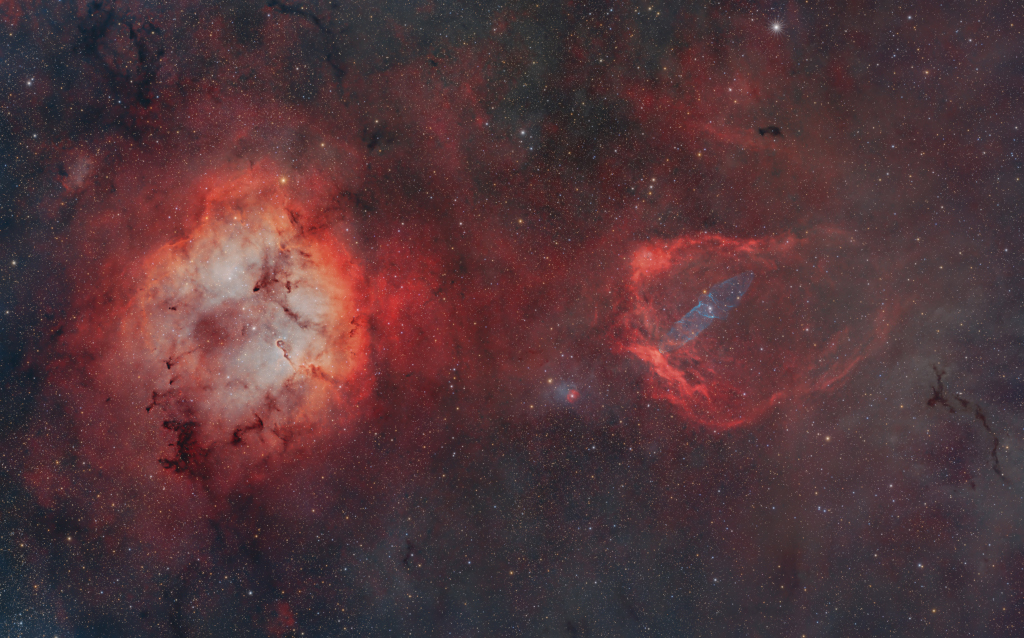
more...
More Posts
- Nat Adderley Day
- Paul Desmond Day
- Willie “the Lion” Smith
- World Music with Transkapela
- Daily Roots with Milton Samuels
- The Cosmos with NGC 1566
- Teddy Wilson Day
- Wild Bill Davis Day
- Scott Joplin Day
- World Music with D’Gary
- Daily Roots with the Versatiles
- Rhythm Roots Workshop @ Ally People Solutions
- The Cosmos with NGC 3603
- RL Burnside Day
- Ray Drummond Day
- Gloria Lynne Day
- World Music with CAMARON DE LA ISLA PACO DE LUCIA & TOMATITO EN EL AÑO
- Daily Roots with Earl Zero
- Wampanoag Tribe of Plymouth Rock, MA
- Happy Thanksgiving 2018 and the National Day of Mourning